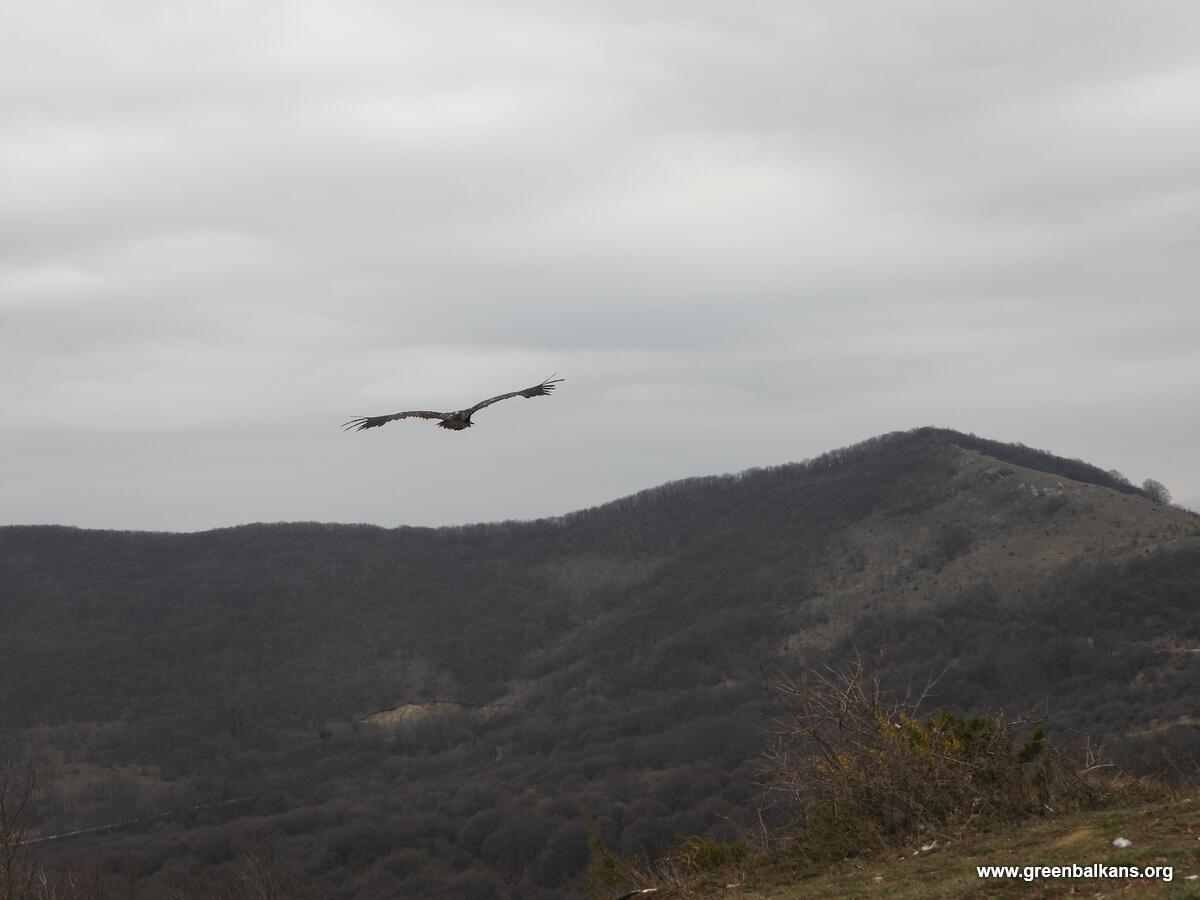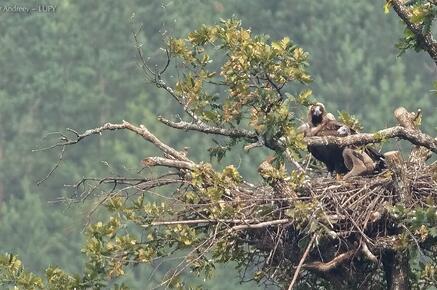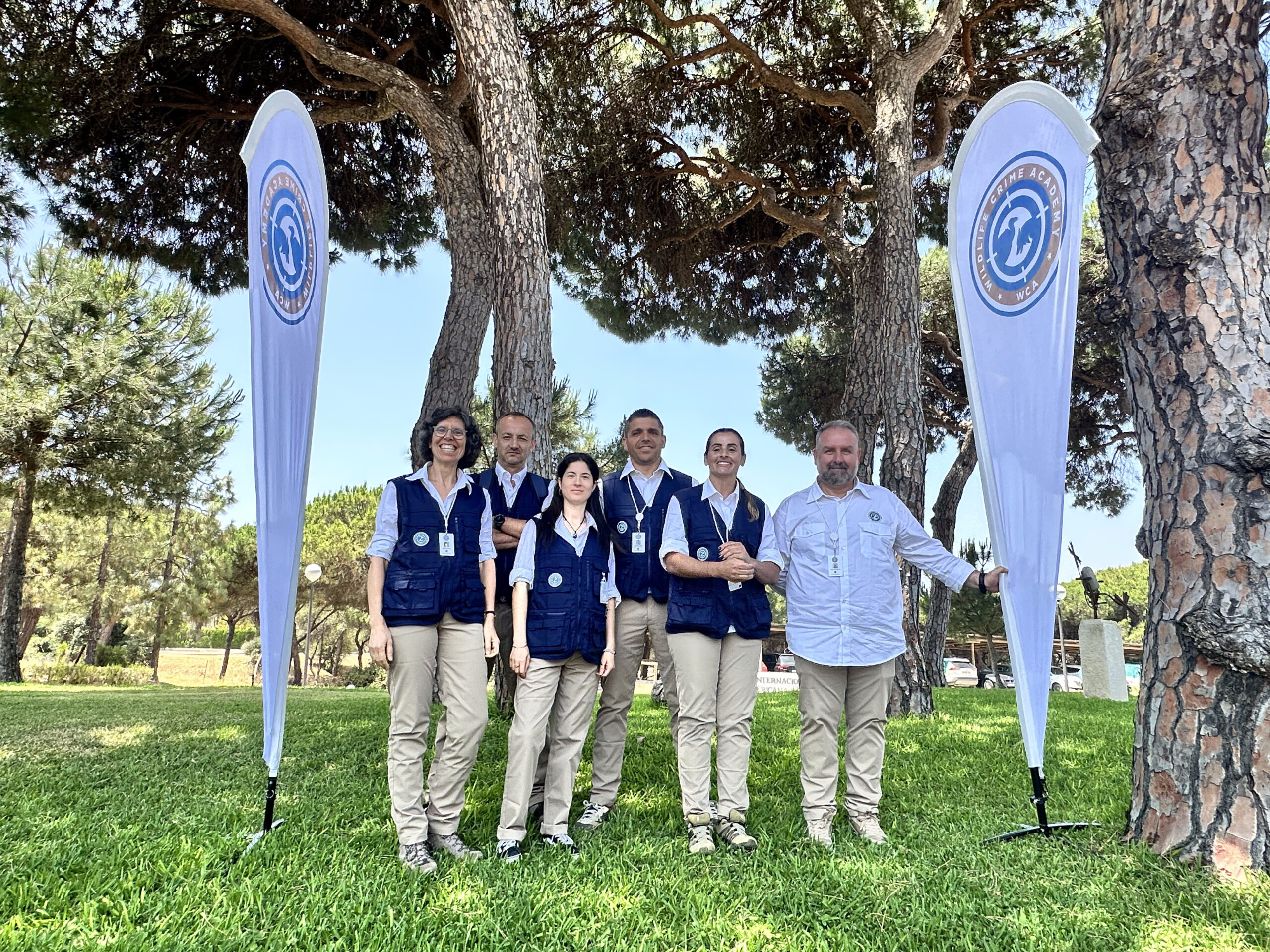The LIFE Aegypius Return project organised a technical visit to Herdade da Contenda with veterinarians and food safety technicians from the veterinary authority in Portugal.
Food is a limiting factor that conditions the distribution, abundance and reproductive success of scavenging birds. Without the carcasses of extensive livestock or wild ungulates in the fields, vultures cannot thrive. One of the objectives of the LIFE Aegypius Return project is to increase the availability of food by meticulously and safely managing animal carcasses and their parts (animal by-products).

The importance of food availability for scavenging birds
The scarcity of naturally available food for scavenger species, which vultures and other birds of prey, is a proven limiting factor for the stabilisation or growth of populations of these species in Portugal. Some of these species, such as the Cinereous Vulture (Aegypius monachus) and the Egyptian Vulture (Neophron percnopterus) are at risk of extinction, and one of the essential measures for their conservation is to increase the availability of food, which in Portugal is predicted in the Action Plan for the Conservation of Necrophagous Birds.
A study recently published by the LIFE Aegypius Return project shows that the food currently available in Portugal is insufficient to meet the needs of the vulture community – Cinereous, Griffon and Egyptian Vultures – in the Special Protection Areas assessed by the project, which are located around or near the breeding colonies of the Cinereous Vulture along the country’s border. Based on the diagnosis made, the study presents a strategy to increase food availability, which includes providing carcasses of extensively raised sheep and goats in specific areas of livestock properties designated as APAAN: Private Area for the Feeding of Scavenger Birds. This measure, although legally established since 2018, has not yet been significantly implemented. Currently, there is only one operational APAAN in Portugal, managed by Palombar in the International Douro region, as a result of the now-concluded LIFE Rupis project.
Increasing food availability through APAANs
The LIFE Aegypius Return project aims to establish 56 APAAN in Portugal and a further ten in Spain, for which it will be essential to establish partnership agreements with livestock producers while also ensuring that the management of these areas is carried out in full compliance with sanitary and public health regulations.
In this context, the project organised a technical visit to Herdade da Contenda, a property managed by the municipal company of the same name from the Municipality of Moura. The estate hosts a CAPAN – Private Feeding Station for Necrophagous Birds (a fenced area where dead animals or their parts are deposited) and intends to include two APAAN in the future. The visit was attended by biologists and veterinarians from the project teams, a veterinarian from the Municipality of Idanha-a-Nova, and technicians from the Directorate of Food Safety Services and the Division of Food and Veterinary Services of Castelo Branco, part of the Directorate-General for Food and Veterinary (DGAV), the national authority for veterinary matters.


The purpose of the visit was to discuss the best practices implemented at Herdade da Contenda regarding CAPAN management — in accordance with legislation and the recommendations published by the project concerning the Cinereous Vulture — and to analyse the potential operation of future APAANs.
The benefits of APAANs for conservation and ecosystem health
APAANs, informally known as “unfenced feeding areas”, differ from Feeding Stations for Necrophagous Birds, which must be completely fenced off according to very demanding and expensive technical standards. The unfenced feeding areas are necessarily located within livestock properties, away from housing, water points and other constraints, which makes them a safe method of contributing to the conservation of vultures. In addition, the formalisation of these unfenced areas prevents the disposal of dead animals in unlicensed spots and brings various economic and ecological benefits. Besides supporting the vultures, APAANs avoid the high costs of removing dead animals by incineration or burial, as well as the carbon emissions associated with transportation. The rapid and effective feeding of vultures prevents the spread of diseases and contributes to the functionality and health of ecosystems. The establishment of future APAANs will be essential to sustaining the growth of the Cinereous Vulture population in Portugal, and represents a necessary paradigm shift in restoring the critical role of scavenging in our ecosystems.
The LIFE Aegypius Return partners extend their gratitude to all the technicians who participated in the visit and to all other stakeholders who have contributed to discussions on the operationalization of supplementary feeding for scavenger birds.

About LIFE Aegypius Return

The LIFE Aegypius Return project is co-financed by the European Union’s LIFE programme. Its success depends on the involvement of all the relevant stakeholders, and on the collaboration of the partners, the Vulture Conservation Foundation (VCF), the coordinating beneficiary, and the local partners Palombar – Conservation of Nature and Rural Heritage (with co-funding from Viridia – Conservation in Action), Herdade da Contenda, Sociedade Portuguesa para o Estudo das Aves, Liga para a Protecção da Natureza, Associação Transumância e Natureza, Fundación Naturaleza y Hombre, Guarda Nacional Republicana and Associação Nacional de Proprietários Rurais Gestão Cinegética e Biodiversidade.




